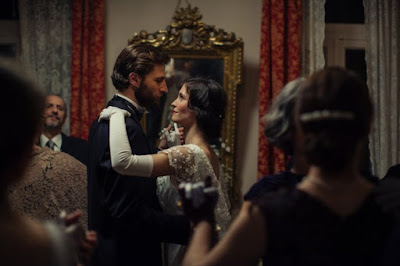Waves crash and family members hash out their anger and stress in the gorgeous new Greek film that opens in several art theaters around the country in the coming weeks. LITTLE ENGLAND is the name of the movie, and its director, Pantelis Voulgaris (shown below), though he has been working in this field for fifty years, was unknown to me until now. I'm most happy to have made his acquaintance, however, because this new film of his is worth seeing for a number of reasons.
First off, there's some truly glorious scenery in the background (cinematography by Simos Sarketzis), while the foreground is often filled with a groups of actors, also unknown to me till now, who fill the screen with enough charisma and smart performances to keep us interested throughout most of the movie's somewhat overlong running time (132 minutes).
The place is Greece; the time 1930; the characters are mostly mothers -- present and future -- while the plot encompasses a sorry tale of horrific control by one mother of the lives of her two daughters well into adulthood, as she forces them to marry for money rather than love and thus begins a chain of events that grows more awful as the movie progresses.
This special kind of mom-induced betrayal produces and an even more special vengeance that, while it is certainly and darkly melodramatic, proves also damned riveting and quietly horrifying.
We move from the 1930s through the end of World War II, and watch as the women of the family and village respond to the deprivations caused by their men making a living from the eternal sea -- which provides abundance and death in pretty much equal measure.
This is a women's movie in both the usual sense of the term and because it allows us to see and identify with these women more fully than does the usual brand of melodrama. We may hate this mother-to-end-all-mothers, but we can't pretend not to understand her or her motivations.
And when the climax comes, about three-quarters of the way along, it's both shocking and symbolic, paving the way for the measured and equally dark denouement.
We don't get many Greek movies released here in the USA. Of late, they've mostly consisted of the deliberately vague but quite interesting work of Yorgos Lanthimos (Alps and Dogtooth). So having the opportunity to savor this old fashioned and dark melodrama, with its fine writing, direction and performances should prove bracing and fun for foreign film aficionados.
Little England (the title has to do with a ship as well as a state of mind), from Corinth Films, opens this Sunday, July 5, here in Miami at the Tower Theater, Other upcoming dates, cities and theaters can be found by clicking here and scrolling down.


























































